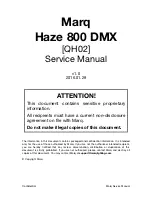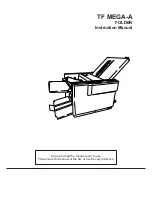Reviews:
No comments
Related manuals for SWA/RS 10101

34
Brand: R.P.S. Corporation Pages: 23

99732
Brand: Tornado Pages: 23

96-107
Brand: Singer Pages: 41

Scholastic 85SCH
Brand: Singer Pages: 230

Haze 800 DMX
Brand: Marq Pages: 24

swingo 750E
Brand: Taski Pages: 9

467-183080
Brand: Duerkopp Adler Pages: 78

FLARE-1000
Brand: Qtx Pages: 6

AVP-875A
Brand: JUKI Pages: 6

SUPER ACE+e
Brand: Brother Industries Pages: 56

NC81200 CLASSES
Brand: Carpet Sergers Pages: 30

TF MEGA-A
Brand: Hefter Pages: 71

LG-158
Brand: JUKI Pages: 24

Innov-is NV1800Q
Brand: Brother Pages: 32

Innov-is 750E
Brand: Brother Pages: 40

Innov-is 2500D
Brand: Brother Pages: 28

Innov-is NV1300
Brand: Brother Pages: 32

JS60
Brand: Brother Pages: 96

















